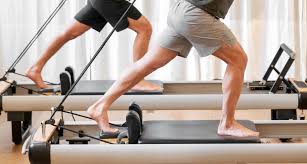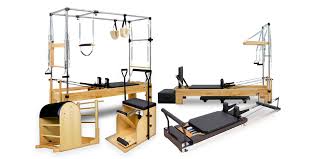How to Use Pilates to Lower Blood Sugar Naturally?
- admin
- August 20, 2025
- 10:23 am
- No Comments

Pilates might look calm and controlled, but metabolically it is anything but sleepy.
By training big, glucose-hungry muscles with low-impact, repeatable movements—and pairing that with purposeful breathing—Pilates can help your body clear sugar from the bloodstream more efficiently.
Think of it as strength, mobility, and nervous-system downshifting in one neat package. In this guide, you would learn exactly why Pilates helps, what the current research shows, how to build a safe 4-week plan (beginner-friendly), how to fuel and track your sessions, and how to troubleshoot common roadblocks.
Best Dietary Supplement for Diabetics research team would also weave in easy, evidence-based habits (like short post-meal walks) that amplify Pilates’ glucose benefits—without turning your routine into a second job.
By the end, you would have a practical blueprint to lower blood sugar naturally with confidence.
Why Pilates Can Lower Blood Sugar? (The Simple Science)
Regular training also increases mitochondrial density and insulin signaling efficiency—your muscles literally become better at using sugar for fuel.
While most of this physiology is documented across exercise modes, it applies to Pilates’ time-under-tension, multi-joint moves too.
Reviews of exercise and diabetes consistently show improved insulin-stimulated glucose uptake in trained skeletal muscle, which is your best friend for day-to-day glycemic control.
Pilates adds extra advantages: core-first movement reduces compensations that can limit how much large muscles contribute; slow, nasal-friendly breathing can trim stress hormones (that otherwise spike glucose); and joint-friendly loading encourages consistency, which is what drives results.
What The Research Says About Pilates And Glucose Control?
- A systematic review and meta-analysis in 2021 showed that Pilates programs produced statistically significant reductions in fasting glucose and HbA1c for people with diabetes compared with non-exercise controls.
- A randomized trial in 2021 found that eight weeks of Pilates (twice weekly) in adults with type 2 diabetes improved metabolic markers versus baseline, suggesting a beneficial effect on glycemic control.
- In a 2022 trial with older women with type 2 diabetes, four to eight weeks of Pilates lowered systolic and diastolic blood pressure—an important cardiometabolic win alongside glucose management.
- Research comparing Pilates to TRX in 2021 found that both methods improved glucose control and increased irisin (a myokine linked to metabolic health), showing that controlled, resistance-style bodyweight work aids insulin sensitivity.
- The latest review in 2024 noted that while evidence is promising, more high-quality trials are still needed. Pilates should be treated as an effective, low-impact pillar alongside light aerobic activity.
Bottom line: Pilates is not just “stretching.” It’s structured resistance and control, with growing evidence for lowering fasting glucose and HbA1c—especially when done consistently.
When you club pilates with yoga for blood sugar control, the results are simply magnified.
How Much And How Often? Guidance You Can Trust?
The American Diabetes Association recommends 150+ minutes per week of moderate-to-vigorous aerobic activity and 2–3 nonconsecutive days of resistance training, plus flexibility and balance work.
Pilates slots neatly into the resistance + flexibility bucket, and many mat sequences reach moderate intensity. Pair Pilates with short, easy bouts of walking after meals for extra post-prandial control.
A 4-Week Pilates Plan To Lower Blood Sugar (Beginner-Friendly)
Who is it for? Adults with elevated fasting glucose, prediabetes, or type 2 diabetes who are cleared for light-to-moderate exercise. If you use insulin or secretagogues, see the safety notes before you start.
Weekly Structure (Repeat For 4 Weeks)
- Pilates: 3 days/week (nonconsecutive), 30–40 minutes
- Light post-meal walking: 10–20 minutes after lunch or dinner, most days
- Optional mobility/breathing: 5 minutes daily for recovery
Session Template (30–40 Minutes)
- Breathing & Core Activation (4–5 min)
- Supine 90-90 breathing with pelvic floor “lift & release” (2 mins)
- Dead bug arms/legs (slow, 6–8 reps/side)
- Warm-Up Mobility (4–5 min)
- Cat-camel x 6, hip rolls x 6, thoracic open-book x 6/side
- Main Work (20–25 min)
- Hundred (modified): knees bent, head supported if needed; 3 sets of 30–40 pulses
- Shoulder bridge (glute bridge): 3 x 8–12 with 2-sec squeeze at top
- Side-lying leg series (abduction/circles): 2 x 10/side
- Quadruped arm/leg reach (bird-dog): 2 x 8/side (3-sec hold)
- Roll-down to half-roll back: 2 x 6
- Plank (incline or on knees): 2 x 20–30 seconds
- Cool-Down (3–5 min)
- Supine figure-4 stretch, child’s pose breathing, neck release
The Post-Meal “Booster”: Walk It Down
Even a 10-minute walk right after eating can meaningfully blunt your inflammation induced insulin resistance. If you can do 20–30 minutes, great—but do not skip it if you only have ten.
Pairing Pilates days with short post-meal walks is a smart, evidence-based combo.
Practical tip: Stroll your hallway or around the block at a conversational pace. Save brisker walks for non-Pilates days if you prefer.
Safety First: Make Pilates Diabetes-Smart
- Pre-session checks: If you use insulin or insulin-secretagogues, check glucose and carry fast-acting carbs.
- Avoid breath-holding/straining: Use steady exhale during effort to avoid blood pressure spikes.
- Neuropathy/foot care: Favor mat work or supportive shoes; inspect feet daily.
- Retinopathy: Keep head-down time brief; avoid high-pressure inverted holds.
- Hypertension: The controlled nature of Pilates is a plus and has been shown to lower blood pressure in older adults with diabetes.
- Medication timing: Log how your body responds to metformin tablet; adjust food/med timing with your healthcare team.
Fueling And Hydration
- Before Pilates: A small snack (10–20 g carb + protein) if you trend low.
- After Pilates: Focus on protein plus fiber-rich carbs and healthy fat.
- Evening sessions: If nocturnal dips are an issue, add a small protein + carb snack before bed.
- Hydration: Mild dehydration can elevate glucose—sip water throughout.
Tracking What Matters
- Immediate signals: Energy, cravings, and stiffness 2–4 hours after Pilates.
- Short term (2–4 weeks): Monitor capillary glucose or CGM trend lines; look for smoother post-meal curves.
- Medium term (8–12 weeks): HbA1c and fasting glucose. Most Pilates trials run 6–12 weeks and show improvements when adherence is good.
Tip: Keep a simple log: session length, sets/reps, effort, and pre/post-meal glucose values.
Troubleshooting Common Hurdles
- Lightheaded? Eat a small carb-protein snack 30–60 minutes before.
- Wrist or shoulder pain? Modify planks with an incline or switch to forearm support.
- No time? Do a 20-minute “micro-session” and prioritize the 10-minute walk after meals.
- Not sure it’s “enough”? Combine Pilates with light aerobic minutes across the week.
Exactly Where Pilates Fits In A Diabetes-Smart Week
- Mon: Pilates + 10–20 min post-meal walk
- Tue: 20–30 min brisk walk
- Wed: Pilates + post-meal walk
- Thu: Mobility + easy 15-minute walk
- Fri: Pilates + post-meal walk
- Sat/Sun: Longer walk or active hobby
This blend respects joints, builds muscle endurance, and smooths glucose variability.
FAQs
Is Pilates enough by itself?
Often, yes—if you’re consistent. But pairing it with short post-meal walks amplifies results for post-prandial spikes.
Mat or Reformer?
Both work. Mat is accessible and effective; Reformer adds variety.
How soon will I notice changes?
Many people see smoother post-meal curves within 1–2 weeks; HbA1c typically shifts after 8–12 weeks.
What about blood pressure and stress?
Pilates can lower blood pressure in older adults with type 2 diabetes and reduce perceived stress—both support glucose management.
Your 10-Minute Starter Session (No Equipment)
- 2 min 90-90 breathing
- 2 x 8 glute bridges
- 2 x 8/side side-lying leg raises
- 2 x 6 half roll-downs
- 2 x 20-second incline plank
Then, walk 10 minutes right after dinner. Repeat 3x/week for 2 weeks and track post-meal readings.
Conclusion: A Practical Solution You Can Start Today
Lowering blood sugar naturally does not require punishing workouts—it rewards consistency with smart, joint-friendly movement.
Pilates checks every box: it engages large muscle groups that soak up glucose, improves insulin signaling, eases stress that otherwise raises sugars, and is accessible enough to stick with.
Evidence shows Pilates can reduce fasting glucose and HbA1c, especially when practiced two to three times weekly and paired with short, post-meal walks—even ten minutes counts.
Combine the 4-week plan above with steady breathing, sensible fueling, and simple tracking, and you’ll give yourself multiple ways to improve glycemic control.
Your solution is straightforward: practice Pilates three days a week, walk for 10–20 minutes after meals, and log your results. Do this for 8–12 weeks and let your post-meal curves—and HbA1c—tell the story.
References:
